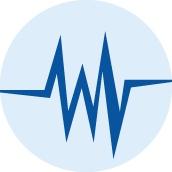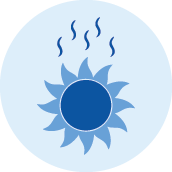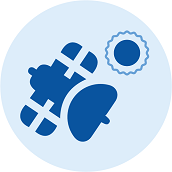EarthquakesNgā Rū Whenua
All of New Zealand is at risk of earthquakes. We can’t predict when one will happen, but we can protect ourselves and our whānau. Find out what to do before, during and after an earthquake.
On this page
About earthquakes
In New Zealand, we have a lot of natural hazards. Earthquakes, floods, landslides, severe weather, tsunami, volcanic activity, and other hazards can happen any time and often without warning.
All of New Zealand is at risk of earthquakes. We can’t predict when one will happen, but we can protect ourselves and our whānau.
You can reduce the impacts of earthquakes by making your home safer. Fix and fasten objects that could fall and hurt you in an earthquake. Find out how to make your home safer at eqc.govt.nz.
You should also review your insurance regularly. Having insurance cover for your home and contents is important to help you get back on your feet if you suffer damage in a disaster.

Visit the Natural Hazards Commission Toka Tū Ake website for more information on making your home safer.

We can't predict disasters, but we can prepare for them. One of the best places to start is with your home. Find out what you can do to make your home safer.
Get ready before an earthquake
Get ready before an earthquake.
- Work out what supplies you might need and make a plan with your whānau.
- Practise Drop, Cover and Hold at least twice a year. You can do this when the clocks change and by taking part in New Zealand ShakeOut, our national earthquake drill and tsunami hīkoi. It's important to practise the right action to take so that when a real earthquake happens, you know what to do.
- Identify safe spaces to Drop, Cover and Hold within your home, school, work and other places you often visit. Safe spaces can be:
- Somewhere close to you, no more than a few steps away, to avoid injury from flying debris.
- Under a strong table. Hold on to the table legs to keep it from moving away from you.
- Away from windows that can shatter and cause injury. And away from tall furniture that can fall on you.
- Not in a doorway. In most homes, doorways are not stronger than any other part of a house and a swinging door can cause more injury.

Make a plan online with your whānau to get through an emergency. Think about the things you need every day and work out what you would do if you didn't have them.

Visit the Natural Hazards Commission Toka Tū Ake website for more information on making your home safer.

In an emergency, you may be stuck at home for three days or more. Your house is already full of emergency items disguised as everyday things. Figure out what supplies you need and make a plan to get through.
What to do during an earthquake
Know what to do during an earthquake.
Drop, Cover and Hold is the right action to take in an earthquake. It:
- stops you being knocked over
- makes you a smaller target for falling and flying objects, and
- protects your head, neck and vital organs.
Do not run outside in an earthquake or you risk getting hit by falling bricks and glass.
If you are near the coast remember, Long or Strong, Get Gone.
- Drop, Cover and Hold until the shaking is over.
- If the earthquake lasts longer than a minute or is strong enough to make it difficult to stand, move quickly to the nearest high ground or as far inland as you can out of tsunami evacuation zones.
Learn how to Drop, Cover and Hold
Drop, Cover and Hold is the right action to take in an earthquake. It:
- stops you being knocked over
- makes you a smaller target for falling and flying objects, and
- protects your head, neck and vital organs.
DROP down on your hands and knees. This protects you from falling but lets you move if you need to.
COVER your head and neck (or your entire body if possible) under a sturdy table or desk (if it is within a few steps of you). If there is no shelter nearby, cover your head and neck with your arms and hands.
HOLD on to your shelter (or your position to protect your head and neck) until the shaking stops. If the shaking shifts your shelter around, move with it.
If you are outside, move no more than a few steps away from buildings, trees, streetlights and power lines, then Drop, Cover and Hold.
If you are in an elevator, Drop, Cover and Hold. When the shaking stops, try and get out at the nearest floor if you can safely do so.
If you are driving, pull over to a clear location. Stop. Wait there with your seatbelt fastened until the shaking stops. Once the shaking stops, proceed with caution and avoid bridges or ramps as they may have been damaged.
If you are in bed, stay in bed and pull the sheets and blankets over you and use your pillow to protect your head and neck. You are less likely to be injured if you stay in bed.
If you have a mobility impairment or use a cane, get as low as you can or sit on a chair, bed, etc. Cover your head and neck with both hands. Keep your cane near you so you can use it when the shaking stops.
If you use a walker or wheelchair, Lock, Cover and Hold. Lock your wheels ad get as low as possible. Bend over and Cover your head and neck as best you can. Then Hold on until the shaking stops.

Learn why Drop, Cover and Hold is the right action to take in an earthquake.

Download and share this factsheet on what to do before, during and after an earthquake.
What to do after an earthquake
After an earthquake, expect more shaking. Each time you feel earthquake shaking, Drop, Cover and Hold. More shaking can happen minutes, days, weeks, months and even years following an earthquake.
After an earthquake:
- Check yourself for injuries and get first aid if necessary.
- Do not run outside. It is frightening to stay in a building immediately after an earthquake, but it is much safer than going outside. An earthquake is not like a fire. You do not have to evacuate a building straight away unless it is showing obvious signs of distress or you are in a tsunami evacuation zone.
- Turn off water, electricity and gas if advised to. If you smell gas, open a window, get everyone out quickly and turn off the gas if you can.
- If you see sparks, broken wires or evidence of electrical system damage, turn off the electricity at the main fuse box if it is safe to do so.
- If you can, put on protective clothing that covers your arms and legs, and sturdy footwear. This is to protect yourself from injury by broken objects.
- If you are in a store, unfamiliar commercial building or on public transport, follow the instructions of those in charge.
- Keep control of your pets. Protect them from hazards and protect other people from your animals.
- Check on your neighbours and anyone who might need your help.
If your property is damaged:
- Do not do anything that puts your safety at risk or causes more damage to your property.
- Contact your insurance company as soon as possible.
- If you rent your property, contact your landlord and your contents insurance company.
- Take photos of any damage. It will help speed up assessments of your claims.
Stay informed by following your Civil Defence Emergency Management Group online.

Find your local Civil Defence Emergency Management (CDEM) Group.

First aid saves lives. Learn what to look for and what to do if you need to give first aid on the St John website.
Stay informed
Follow your Civil Defence Emergency Management Group online.
Find out how to stay informed
Types of hazards | Ngā momo matepā
In New Zealand we have a lot of natural hazards. Find out what to do before, during and after each type of emergency.









